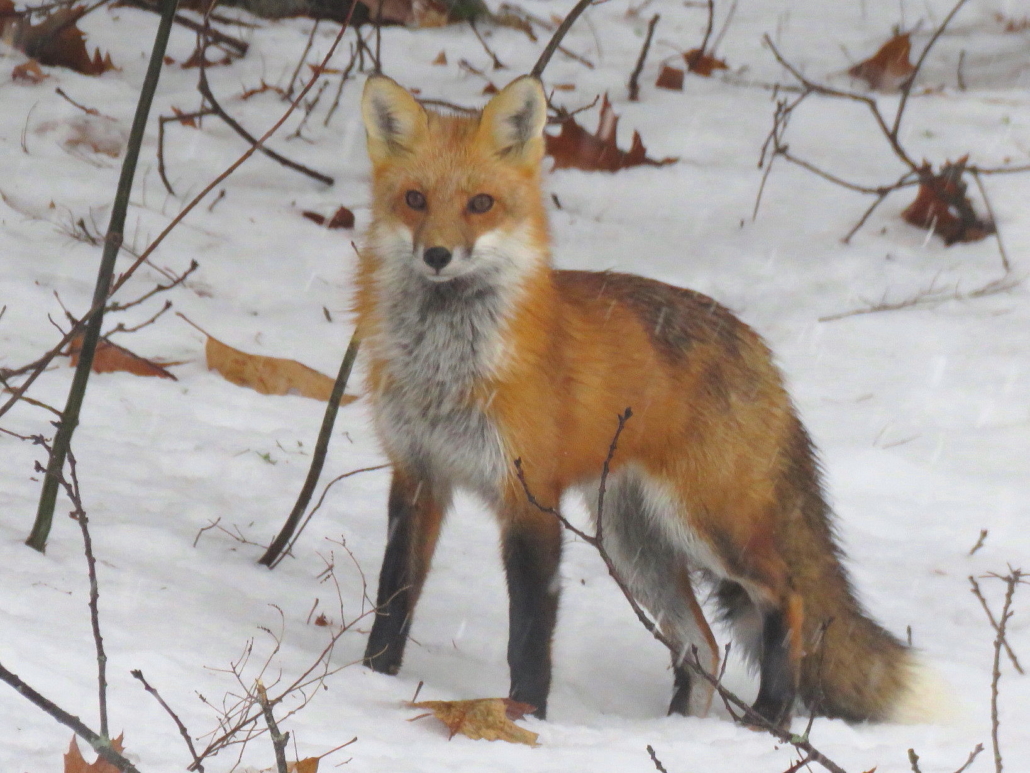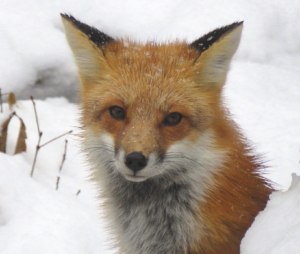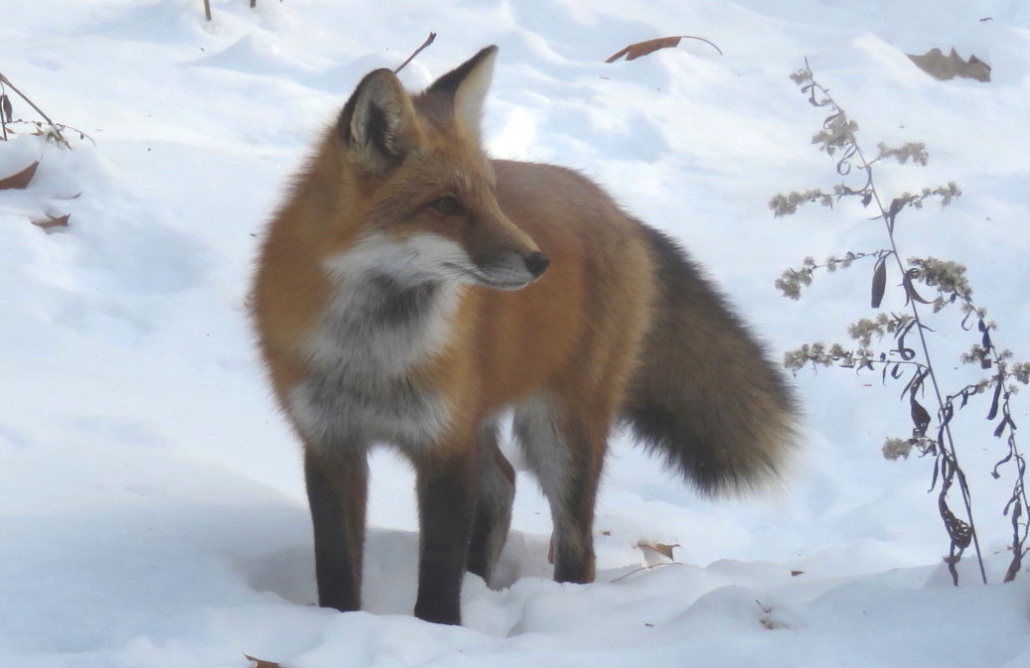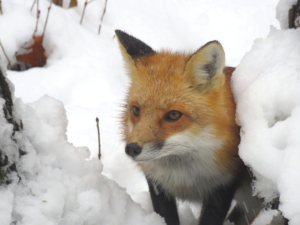SCORES & OUTDOORS: Red fox population growing in our area
 by Roland D. Hallee
by Roland D. Hallee
A week ago, Jayne Winters, of South China, sent along some excellent photos of a red fox that has been visiting her property recently.
The photos were remarkable and deserved some attention. It’s been a while since we visited with red foxes in our area, of which there are an abundance.
The red fox is the largest of the true foxes and one of the most widely distributed members of the order Carnivora. They are present across the entire Northern Hemisphere from the Arctic Circle to North Africa, North America and Eurasia. It is listed of least concern by the International Union for Conservation of Nature (IUCN).
Since its introduction to Australia, it has been found to be a nuisance to native mammals and bird populations. Thus, it has been listed as among the top 100 worst invasive species in the world.
Red foxes are usually together in pairs or small groups consisting of families, such as a mated pair and their young, or a male with several females having kinship ties.
They are somewhat shy and don’t like human interaction. Therefore, they will generally leave an area of increased activity. Two years ago, at camp, a family of red foxes had made its home under an outbuilding during the winter. Once humans moved in for the summer, the red foxes vacated their den and moved on elsewhere.
They either establish stable home ranges within particular areas or are itinerant with no fixed housing. They use their urine to mark their territory. Outside the breeding season, most red foxes favor living in the open, in densely vegetated areas, though they may enter burrows to escape bad weather. They often dig their dens on hill or mountain slopes, ravines, bluffs, steep banks of water bodies, ditches, depressions, gutters, in rock clefts and neglected human environments.
The red fox primarily feed on small rodents, though it may also target rabbits, game birds, reptiles and invertebrates. Fruit and vegetable matter is also sometimes eaten. Although the red fox tends to kill smaller predators, they are vulnerable to attack from larger predators, such as wolves, coyotes, and medium-sized felines.
They prefer to hunt in the early morning hours before sunrise and late evening. Although they typically forage alone, they may aggregate in resource-rich environments. Losses of poultry and penned game birds can be substantial if you have red foxes foraging in the area.
Their winter fur is dense, soft, silky and relatively long. For the northern foxes, the fur is very long, dense and fluffy, but is shorter.
Red foxes have binocular vision, but their sight reacts mainly to movement. Their auditory perception is acute, being able to hear black grouse changing roosts at 600 paces, the flight of crows at three-tenths of a mile and squeaking mice about 330 feet. Their sense of smell is good, but weaker than that of dogs.
In recent years, I have noticed an increase in the sightings of red foxes in the area, particularly in the Cross Hill area of Vassalboro, near our camp. They have been heard howling during the late night hours. Their cries can be associated with that of an injured small dog.
Like any other wild animal, they should not be approached if spotted. They have been known to carry rabies. Cute and cuddly looking, leave them alone.
Roland’s trivia question of the week:
Name the six NFL teams to win the Super Bowl as a wild card team.
Responsible journalism is hard work!
It is also expensive!
If you enjoy reading The Town Line and the good news we bring you each week, would you consider a donation to help us continue the work we’re doing?
The Town Line is a 501(c)(3) nonprofit private foundation, and all donations are tax deductible under the Internal Revenue Service code.
To help, please visit our online donation page or mail a check payable to The Town Line, PO Box 89, South China, ME 04358. Your contribution is appreciated!






Leave a Reply
Want to join the discussion?Feel free to contribute!